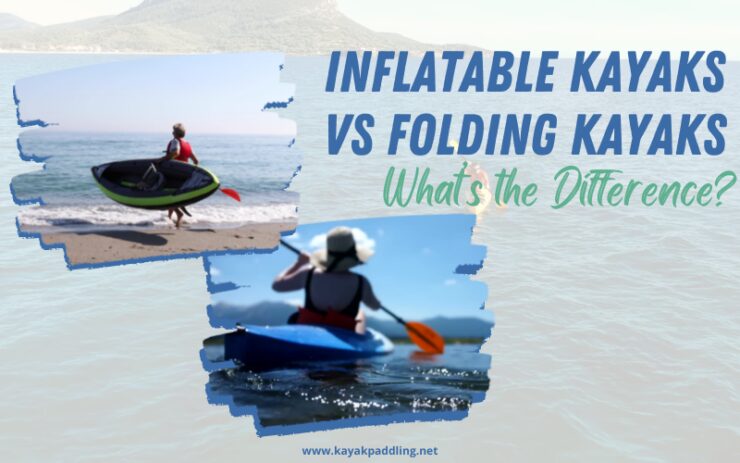A kayak is a small water vessel that uses two-bladed pedals as a propeller. The traditional kayaks have a cockpit to accommodate one paddler. It is sometimes covered with a spray deck, which protects it from water and stops water to enter it.
A spray deck is basically a water-resistant cloth. Spray decks are pivotal, especially in rough waters. Modern boats have made significant changes yet they claim to be Kayaks.
Modern boats have the capacity to accommodate a number of people while traditional kayaks have the capacity to accommodate only one person. Further improvements include the inclusion of automatic propulsion systems like engines, and electric motors, replacing a single hull with two hulls, etc.
Read More: How to Kayak for Beginners- A Simple Guide For Amateurs
Two of the most widely used kayaks include inflatable Kayaks and Hard-shell Kayaks. The differences between inflatable and hard-shell kayaks are their physical makeup. Inflatable kayaks are made out of a durable PVC-based fabric, while hard shells are constructed from rotomolded plastic.
An inflatable kayak consists of several chambers, which hold the air inside the boat to provide buoyancy. These chambers can be made with drop-stitch technology, making the kayak more durable.
However, an inflatable is not as durable or rigid as a hard shell, which can make it difficult to control in choppy water.
A hard-shell kayak has several features that inflatable kayaks do not, including construction that is rigid, making it easier to control in choppy water. They are also lighter because they don’t have the same inner chambers as an inflatable.
Table of Contents
ToggleInflatable Kayak

-
Physical Composition
Kayaks are made up of a wide variety of materials. The best inflatable kayaks available in the market are made up of synthetic rubber and plastic polymer. Inflatable Kayaks are assembled in two ways.
In one way it is made by inserting tubes that are filled with air just like in a bicycle tire.
While the other uses airtight material which is directly inflated with air just like a tubeless tire.
It provides durability and the ability to stay afloat on water. These Kayaks are much lighter in weight. Their weight is around 25 pounds. The Kayak is filled with air which keeps it afloat on water.
-
Pros of an Inflatable Kayak
An inflatable Kayak has the ability to handle more weight as it uses air to get inflated. An inflatable Kayak may itself have a weight of around 25 pounds but its threshold weight which is the maximum weight that it can carry in water may be up to 500 lbs.
This less-weight Kayak adds another benefit to its name i.e. it can be taken to water by an individual. Unlike heavy material-made Kayaks that require usually 2 to 3 people to take it to water.
Furthermore, it is available at affordable rates and provides sufficient durability. It has become famous among beginners who could not afford the expensive ones. One of the biggest advantages of an inflatable Kayak is that It can easily be transported. Once deflated it can be easily carried to all places.
-
Cons of an Inflatable Kayak
Safety is one of the biggest concerns for those who go to water. Though the material used in the construction of an Inflatable Kayak is reliable it is not as dependable as other hard material Kayak like Hardshell kayaks in rough waters.
Another con of inflatable Kayaks is that their maneuverability is not as good as other Kayaks. One of the biggest disadvantages of an inflatable Kayak is its shorter life span as compared to more resilient hard shell Kayaks. It is also difficult to get repaired as it may get complicated to resuscitate all the punctures. Besides this, a repaired inflatable Kayak always poses a risk of getting punctured again.
Hardshell Kayak

-
Physical Composition
Hard-shell Kayaks are made up of an amalgam of substances which include wood, fiberglass, plastic, and other materials such as Kevlar.
Hard-shell kayaks are all heavy and their weight is around 55 pounds. The outer layer of the hard-shell Kayak is covered by a colored gel coating that forms the surface layer of the Kayak. This not only provides protection but also enhances beauty.
The fiberglass and Plastic used are of specialized nature, which not only provides extra protection and safety but keeps the Kayak from getting too heavy.
-
Pros of Hard Shell Kayak
The hard-shell Kayak is considered relatively safer. They are composed of strong material that has the ability to withstand rock water and its strong currents.
Since safety is considered of utmost importance that is why it is preferred to use a hard-shell Kayak where possible. Rough waters also require greater maneuverability because one has to avoid rapidly emerging water currents and pointed stones.
Another important benefit of a hard-shell Kayak is that it is a long-term investment as compared to an inflatable Kayak because it is less prone to weathering and has a longer life. It is a bit expensive but it provides the benefit of long-term use.
-
Cons of Hard Shell Kayak
There are many cons also of a hard-shell Kayak. Most importantly it is difficult to carry a hard shell Kayak from one place to another since it is not foldable and requires relatively greater space. It hinders movement to congested places like jungles and lakes.
Another disadvantage of a hard shell Kayak is that it is expensive as compared to an inflatable Kayak so it requires more investment.
It requires multiple people to carry it to water. This makes it less attractive to single individuals. The storage of hard-shell Kayak is also an issue. For people who go on vacation how to enjoy in lakes, may find it quite difficult to keep it safe in hotels where they live. Lastly, the weight that it can carry in water is also less than the inflatable Kayaks can carry. Thus, it has reduced the ability to carry more people.
Advantages of an Inflatable Kayak
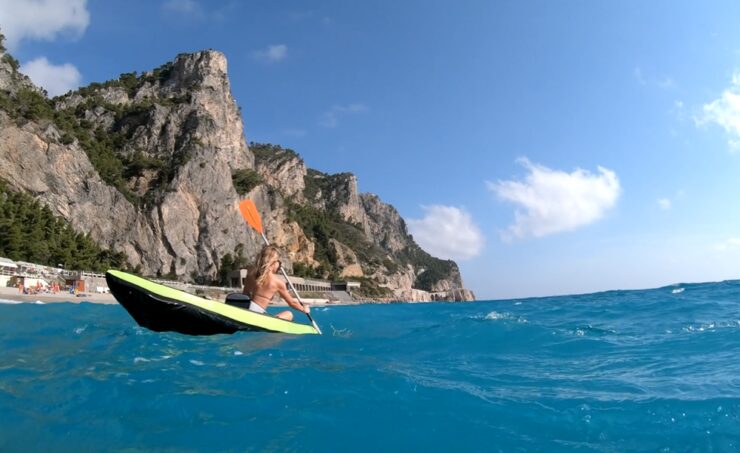
One major benefit of an inflatable kayak is portability. These boats can be deflated and stored much more easily than hard shells when you are not using them. Plus, transporting one around is easy because they usually come with backpacks that have straps for easier carrying. One word of caution, though: they are not the easiest things to carry up or downstairs.
Another benefit is price. Inflatable kayaks tend to be much cheaper than hard shells because building them requires fewer materials and construction time.
They can often be purchased brand new for just a few hundred dollars. Hard shells are more expensive because they require more extensive materials, which leads to higher prices for customers who don’t want just any boat but instead opt for quality products.
Yet another advantage is their durability when taken care of properly. It’s true that inflatables aren’t as durable as hard-shell designs, but given the right care, it’s possible to get your money’s worth out of them.
They are still delicate, so it’s important to deflate them properly after each use before rolling them up to protect the material from tears caused by improper rolling techniques.
For those who don’t have much storage space for a boat, inflatables are perfect.
Their compact size also allows you to easily bring them on road trips or to friends’ houses for a day on the water. That makes them great for people who are constantly moving around and looking to save space in their new homes or apartments with limited storage options.
Disadvantages of an Inflatable Kayak
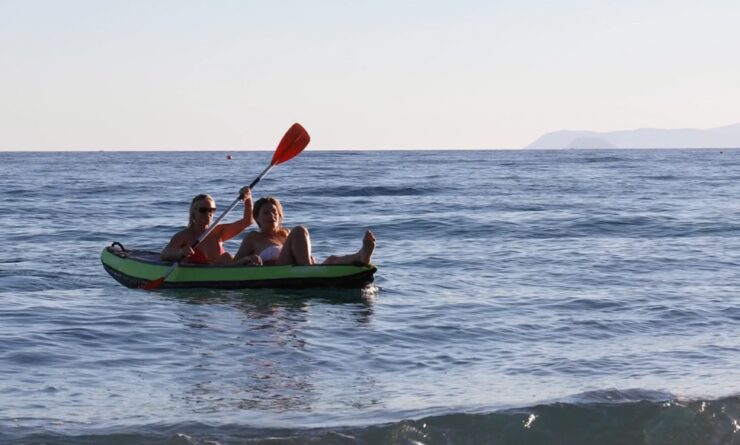
The biggest downside is definitely its lack of durability. Since inflatable kayaks rely on air for buoyancy, they are not as durable as their hard-shell counterparts without proper care.
Even if you deflate your boat after each use, it could still be susceptible to tearing from improper rolling techniques, rough surfaces, sharp objects, dragging at the bottom of the ocean floor, being stowed improperly using straps that don’ have padding, being punctured by fish hooks or other underwater hazards, and even outside elements like sun exposure.
Another issue is storage.
You cannot simply throw an inflatable kayak in the back of your car without worrying about damaging it, so you need to either deflate it completely before carrying it around which can be inconvenient, or find a way to store it somewhere that makes sure the boat isn’t bunched up or squashed against something else.
Another concern is safety.
You cannot simply throw your inflatable kayak on top of your car without any protection or padding between the two since there is a chance that the boat will get punctured if there isn’t enough cushioning.
While the damage done on the exterior of the boat doesn’t affect its performance, anyone who has ever popped a raft knows how deflating one quickly on land can be an issue with enough force.
Hard Shell Kayaks
Hard-shell kayaks are made out of fiberglass, polyethylene, or some other plastic. They are the most commonly used kayaks by people all over the world because they are cheap and easy to build. Most of these kayaks come with a rudder which is controlled by foot pedals on each side. Each pedal can be turned independently so that one can turn left while the other turns right (and vice versa).
These kayaks also give you the advantage of being able to customize them in any way you like; thus creating your own unique design.
However, this comes at a price; there are more maintenance issues than there are with soft shell kayaks. Hardshell kayaks tend to get chipped easily when hitting rocks or logs on the ground.
Even though fiberglass is one of the most impact-resistant materials it’s still not as durable as Polyethylene kayaks. There are a few differences between a Fiberglass and a Polyethylene kayak, but they mostly come down to price, weight, and environmental impact.
Advantages of Hard Kayak Shell Kayaks
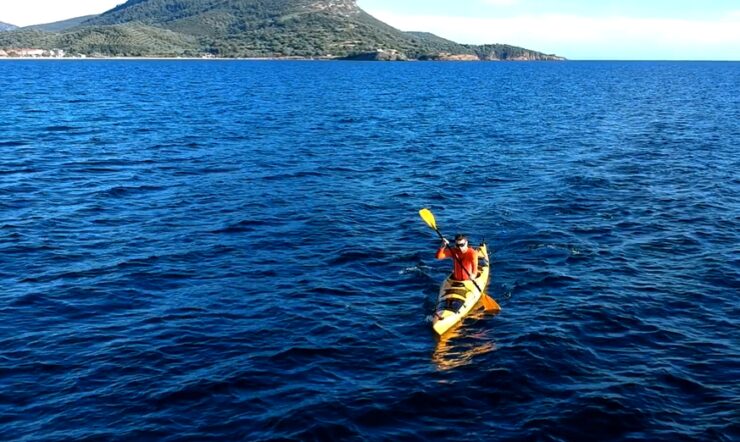
As far as price goes Polyethylene kayaks tend to be cheaper than fiberglass kayaks because they require less material.
From an environmental standpoint, both polyethylene and fiberglass have their own pros and cons; although there has been some progress made in recent years with certain companies making biodegradable plastic that breaks down over time (similar to what you would see in composting).
The hard shell kayaks offer better maneuverability as compared to inflatable ones and hence can be taken out for a longer period of time without risking physical fatigue.
On average, however, these types of kayaks have a larger environmental impact than that a softshell kayak. In terms of weight, Polyethylene kayaks tend to be lighter which makes them easier to carry and transport.
However, it doesn’t mean that Fiberglass kayaks are extremely heavy because there are many different types of fiberglass which means they can range from being very lightweight to being as heavy as steel if you wanted a strong solid surface to stand on for fishing purposes.
The average person can find a hard shell kayak for anywhere between $400 – $5000 depending on what material was used to make it, what brand it is, and how long the manufacturer has been producing these types of watercraft.
The biggest advantage however of buying a hard-shell kayak is that you can customize anything from the seat to the pedals, to even the size of the kayak. Some people want a longer kayak while others want a shorter one, and this is where a hard-shell kayak really shines.
Disadvantages of Hard Shell Kayaks
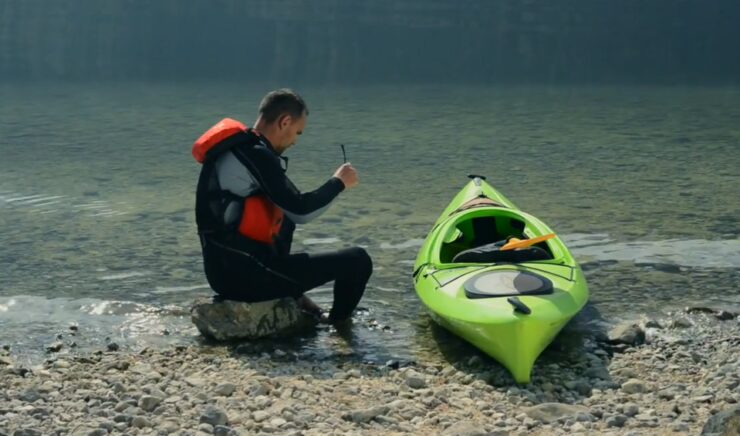
The disadvantage however with going with a hard shell kayak is that they chip easily if you accidentally hit something on the water. This means that if you purchase a fiberglass or polyethylene model it’s best to stay away from rocks when in shallow waters because this could damage your kayak in ways that cannot be repaired.
There are also different types of paddles for these types of boats so make sure when purchasing yours that it goes well with your boat, not all paddles will have the same measurements.
Also, make sure that you buy your kayak from a reputable brand or manufacturer because there are many knock-offs out there that may seem like they’re the real thing but in reality will be extremely uncomfortable to use.
Check out some other picks from Amazon also:
Adelaide Gentry, a seasoned kayaking enthusiast and expert, is the driving force behind KayakPaddling.net. With over a decade of experience navigating the world’s most challenging waterways, Adelaide combines her passion for adventure with a deep knowledge of kayaking to provide insightful and practical guidance for paddlers of all levels.
Related Posts:
- 16 Best Kayak For Beginners 2024 - Kayaking Adventure Gear
- 12 Best Water Socks in 2024 - Swim and Dive Tested
- Top 10 Best Tandem Kayaks To Paddle With Friends…
- Top 10 Best Inflatable Kayaks 2024: Portable + FUN
- Canoe vs. Kayak: Differences and Benefits You Need to Know
- 17 Best Trolling Reels 2024 - Enjoy your Fishing Adventure

